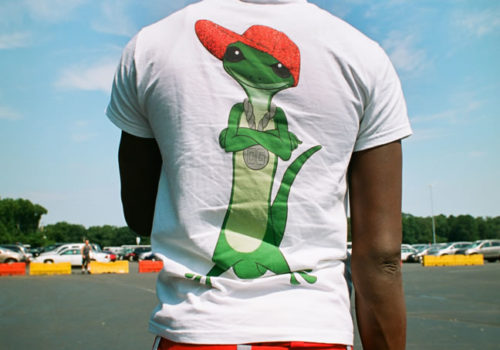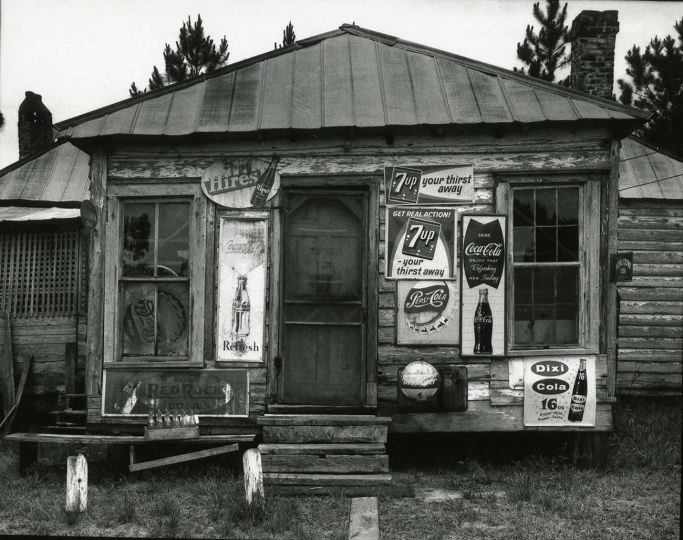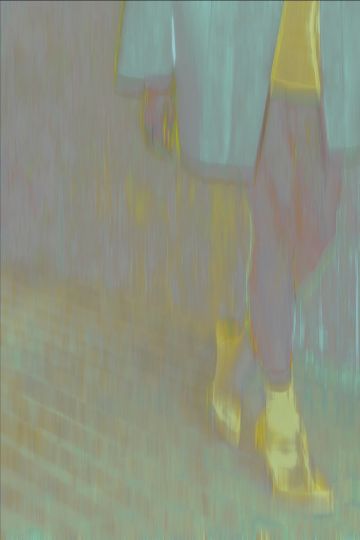Susan Barnett is a very secretive photographer, but she met Adriana
Teresa of FotoVisura & Visura Magazine. Here is their interview:
Susan Barnett: I grew up in Packanack Lake, New Jersey, a lake community not far from Paterson. Packanack was a community known for its restrictive land covenants that meant that only Northern European Irish and German families were welcome. No people of Italian ancestry, Jewish ancestry or “Negroes, Puerto Ricans and similar groups” (as the phrasing in the covenants stated) were allowed. I was embarrassed, no… mortified, to live there once the issue was brought to my attention in the most embarrassing way.
There was an article in the New York Times published in 1967 where the prejudices and discriminatory practices of Packanack were brought to light. At the time, I was not going to school in Packanack but was sent to a private girls school in nearby Upper Montclair, (Lacordaire Academy) where most of my friends were Italian. When the article came out everyone knew where I lived, since I took the train everyday to school and always had to leave just a little bit early to get home to do homework. My friends ostracized me and this was devastating, since there were only ten girls in each grade and I had no one to turn to. From that moment on, I knew the painful feelings of being an outsider and the devastating effects of prejudice that were unusual, since I guess I was considered just a typical, white, American girl next door, but from a town where only “certain” people were allowed to live.
I carry that shame with me and do not easily say where I am from—although I guess everyone will know once this article comes out. I have a t-shirt and it says “Family: It Ain’t Always Pretty” and I agree. You don’t get to choose your family and choose where you grow up. However, as soon as I could, I hightailed it through the Lincoln Tunnel and never looked back.
I see stigmas and symbols of prejudices all the time and my interest in t-shirts and their messages stems from this education. Needless to say, I am not proud of this history and don’t wear a sweatshirt to the beach announcing my hometown.
Adriana Teresa: Did you ever visit and photograph in Paterson?
Susan Barnett: Later in life, I visited Paterson and reluctantly started taking pictures, but only a very few. I soon realized how out of place I was and did not think it appropriate for me to waltz into a town and start snapping away. I was very aware of my past and was not comfortable knowing that I was a source of anger for the people in Paterson, who knew they were not welcome in my place of birth and home town.
I believe you should take pictures of what you know and I did not know Paterson. I am always suspicious of travel pictures, where the local people are seen as oddities as on safari and worthy of a picture, because they do not look like the picture taker. I have radar for exploitation and that is why I am very careful about how I take the pictures for “Not In Your Face”. It is a typology where a democratic, respectful encounter is my goal. That is why I take everyone the same: head, shoulders and hips and not their face.
Paterson made the headlines during the riots, and places like Packanack Lake are the story behind the turmoil. I have not spoken about my past before and it is still pretty raw as I am now remembering it. Maybe someday I can go to Paterson and talk about the past, but for now I am taking the kind of picture that I hope (when understood) can start a dialogue about perception, intolerance and all the misunderstandings that can stem from judging books by their cover (a popular idiom of the day).
Another idiom I am fond of is “You Can’t Go Home Again”, although today admittedly my hometown has changed.
Adriana Teresa: You were a student activist during the Vietnam War. Tell me about yourself during this period.
Susan Barnett: At Marymount College, Tarrytown NY, I was a student activist primarily targeting the United States Military Academy at West Point, which was nearby. Since Marymount was an all girls’ college, we were divided between the girls who dated the cadets and attended the “mixers” or those of us who camped out at the gates of West Point holding placards demonstrating against the Vietnam War. Sister Elizabeth McAllister and the Berrigan Brothers were associated with Marymount and had a profound influence on like-minded protesters, who were against the War and particularly, the draft. My politics were a constant source of friction with my Father, who threatened to pull me out of college because of my activities. I couldn’t appear as a hippie with the requisite bell-bottoms and peasant blouse, and was sure to wear my Villager sweater set and circle pin when I went home to fit in. I kept my politics closely to myself but continued to use my graphic skills to make all kinds of protest propaganda. Additionally, in the Sixties, the Civil Rights movement was ramping up, which was another bone of contention with my Father.
For years, our family home was in a segregated community bent on keeping any person of black ancestry or appearance, whether of African descent or not—referred to then as “Negroes”—from buying houses. Even though the Civil Rights movement banned the use of the word “Negro” in the late 1960s, unfortunately, it was still used when the lake’s covenants were drawn up.
If you were to ask what my politics were back then, I would say that I was a liberal Democrat, whose interests were social activism. However, I was not affiliated directly with any specific group.
Adriana Teresa: One of your numerous tasks was to do silkscreen on t-shirts and posters. Could you share examples of the content on these?
Susan Barnett: The slogans we printed were very simple: “Stop the War in Vietnam”, of course, “Make Love Not War”, “Draft Beer, Not Boys” and “Hell No We Won’t Go!” A particularly effective slogan I was responsible for was “Hell no Boyfriend, Please Don’t Go.” It worked well when we dressed in our black, short cocktail dresses and pearls, and we carried the “BOYFRIEND” signs. The girls lined up in a row and the protest made the papers.
Adriana Teresa: In 2010, you photographed a woman wearing a t-shirt that had a mask image printed on her back, which you said triggered the new project, “Not In Your Face”. How so?
Susan Barnett: When I was out in Dumbo and saw a woman with beautiful fashionable dreadlocks and a skirt with a silk-screened African mask t-shirt tucked into her waist, I took the chance and photographed her while she was standing at a stoplight without asking her. Both, her look and the t-shirt peaking out intrigued me. When I had the film processed, that frame was the only interesting shot I had taken all day.
I was interested in “the social manifestation of clothing” that Martin Paar has often talked about. The fact she was wearing a t-shirt with an African mask seemed a particularly apt symbol, and the image that she chose to wear that day implied to me that she was well aware of her African ancestry. Also, the fact that she wore it on her back added to the potency of her look in that you couldn’t see her face, but she let you know something about her self. I have since seen and photographed that same t-shirt and every time it looks different depending on who is wearing it, be it a man or a woman, and how it was worn, coupled with jeans or worn loosely.
The following day, I began noticing how many t-shirts had graphic images on the back and began photographing them, but still, while the wearer was unaware I was taking a picture. I didn’t get exactly the impact I had hoped for, so I began to stop people and ask them to pose in their t-shirt right on the spot where I found them. Each person seemed to reveal something about their very individuality by choosing a specific message to wear on their back. I became very excited to realize I had the beginnings of a typology about social identities that I had realized I wanted to investigate the day I found the mask.
Adriana Teresa: I imagine that as a result, you pay special attention to the iconography people choose to wear. If so, why?
Susan Barnett: I do pay special attention to the iconography on t-shirts since it is often worn to identify which group an individual wants to tell us he or she belongs to or what his or her political, societal or religious concerns might be. Since I talk to each person in the photo (over 1000 or so people by now), I am often told the story of why they chose that particular shirt and nine out of ten times there is a deeply felt reason why someone would choose to wear a shirt depicting Marcus Garvey or the Virgin of Guadeloupe or even Batman. They are worn for validation and also to fit in and be seen as cool with all the other choices in footwear, tattoos, hairstyle, jewelry and even posture that is appropriate for their particular group. Seen together, they become a tribe but seen apart they are individuals seeking identity with very specific likes and dislikes.
Over the three years, I have been shooting “Not In Your Face” I have seen distinct differences in the messages worn. In 2009, I saw many “hopeful” messages with talk of “Change”, Obama and “Yes We Can”. I also saw moral messages of “Rise Above”, “Hard Times Bring Hard Luck” and “Moral Courage and Stand Apart”. Today, we often see signs of Anarchy with words of protest and dumping the government, stopping taxation. The messages are bell weathers of our times, with news and headlines being printed on shirts not unlike billboards. I have seen images of Michael Jackson and Amy Winehouse only a few days after their passing and even “ I Survived New York’s Earthquake August 23, 2011” hours after it struck.
Adriana Teresa: What is the project “Not in Your Face” about?
Susan Barnett: The project “Not In Your Face” is about judgment and perception. I was taught that clothes can tell you a lot about a person and that what people wear can give you clues about what their wealth, social standing and even religious or political views might be. There was an inherent, nasty judgment apparent in this kind of education and the way that impression was used. I have been concerned with that view ever since. To decide who a person is based on whether they have the right pocketbook or latest sneakers is another form of prejudice and it often is based on their worldviews, hypocrisy and intolerance.
In this day of rampant bullying, I want to draw attention to how our perceptions might be formed and how we make instant assumptions based on appearance. If my project “Not In Your Face” can start one conversation or change one person’s perception about how we view each other, I feel my photographs will have had an effect.
















